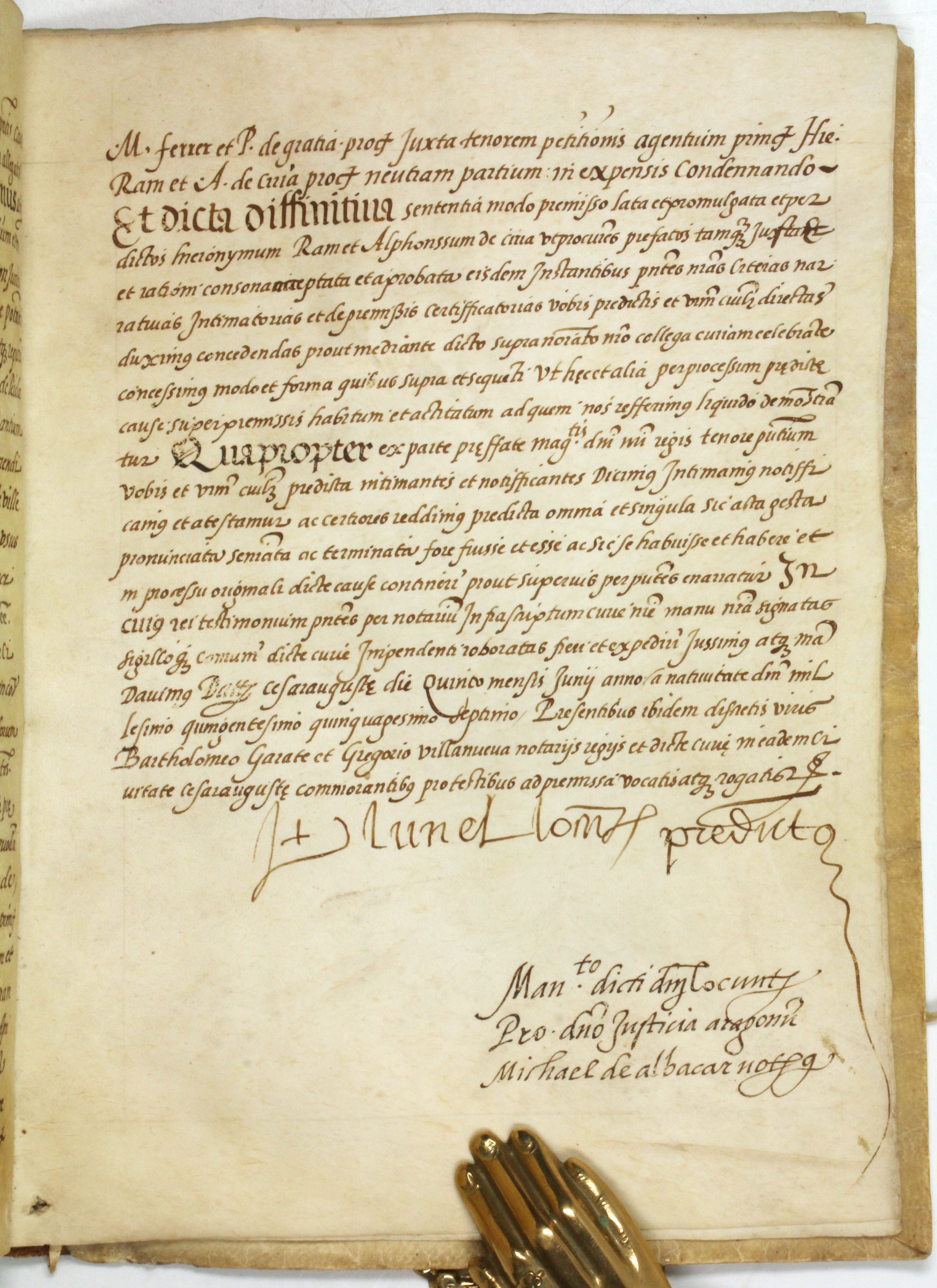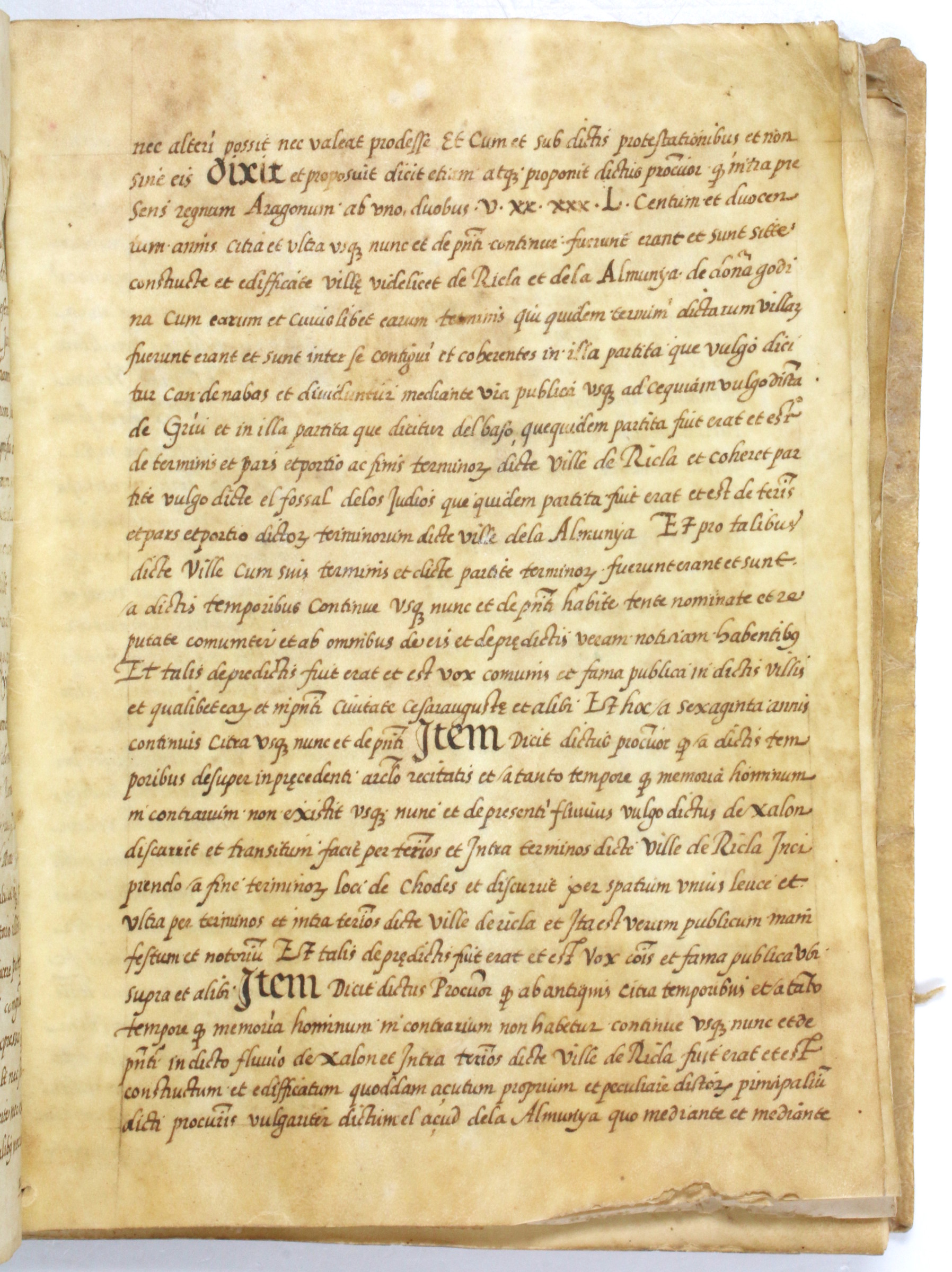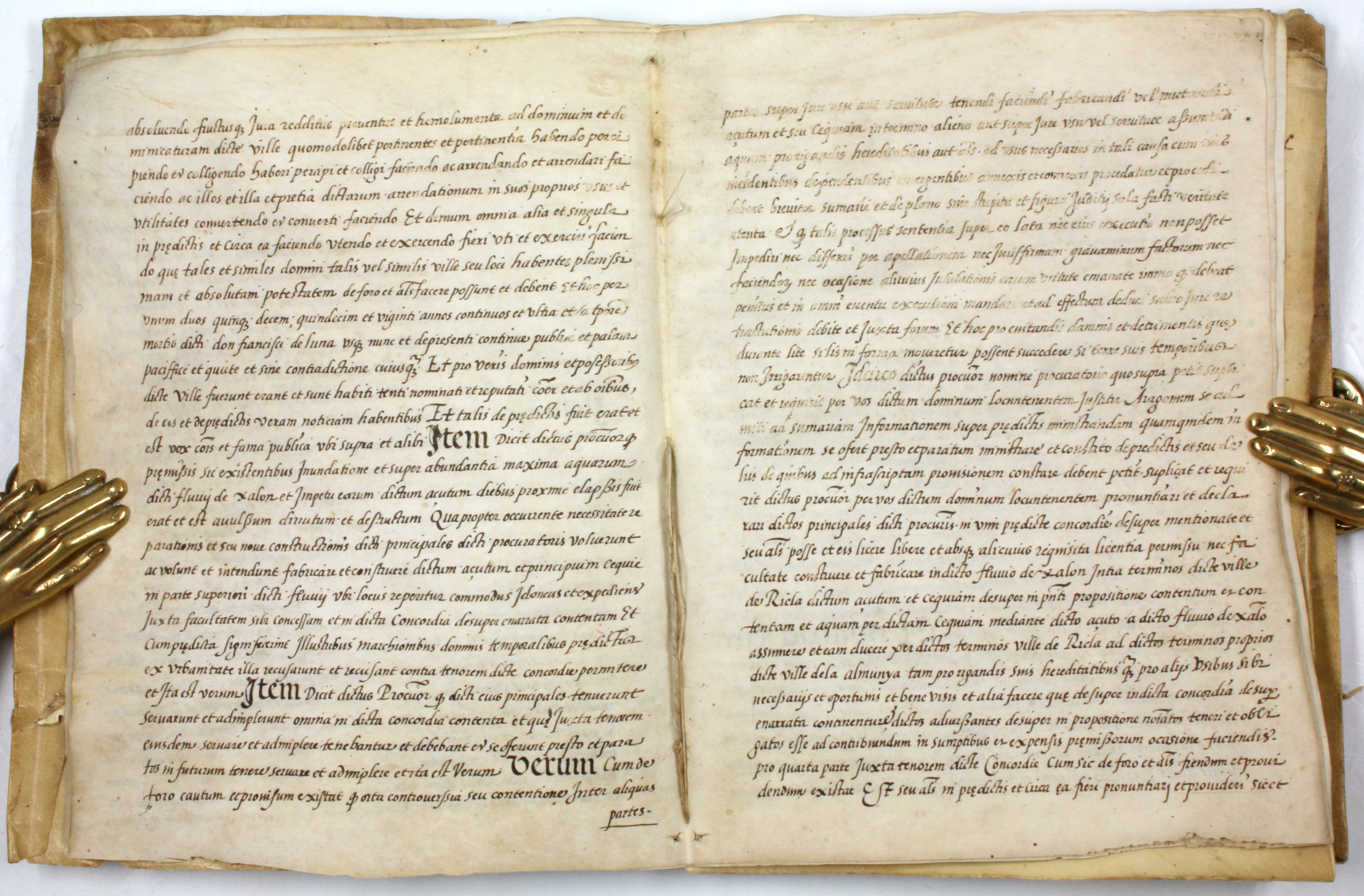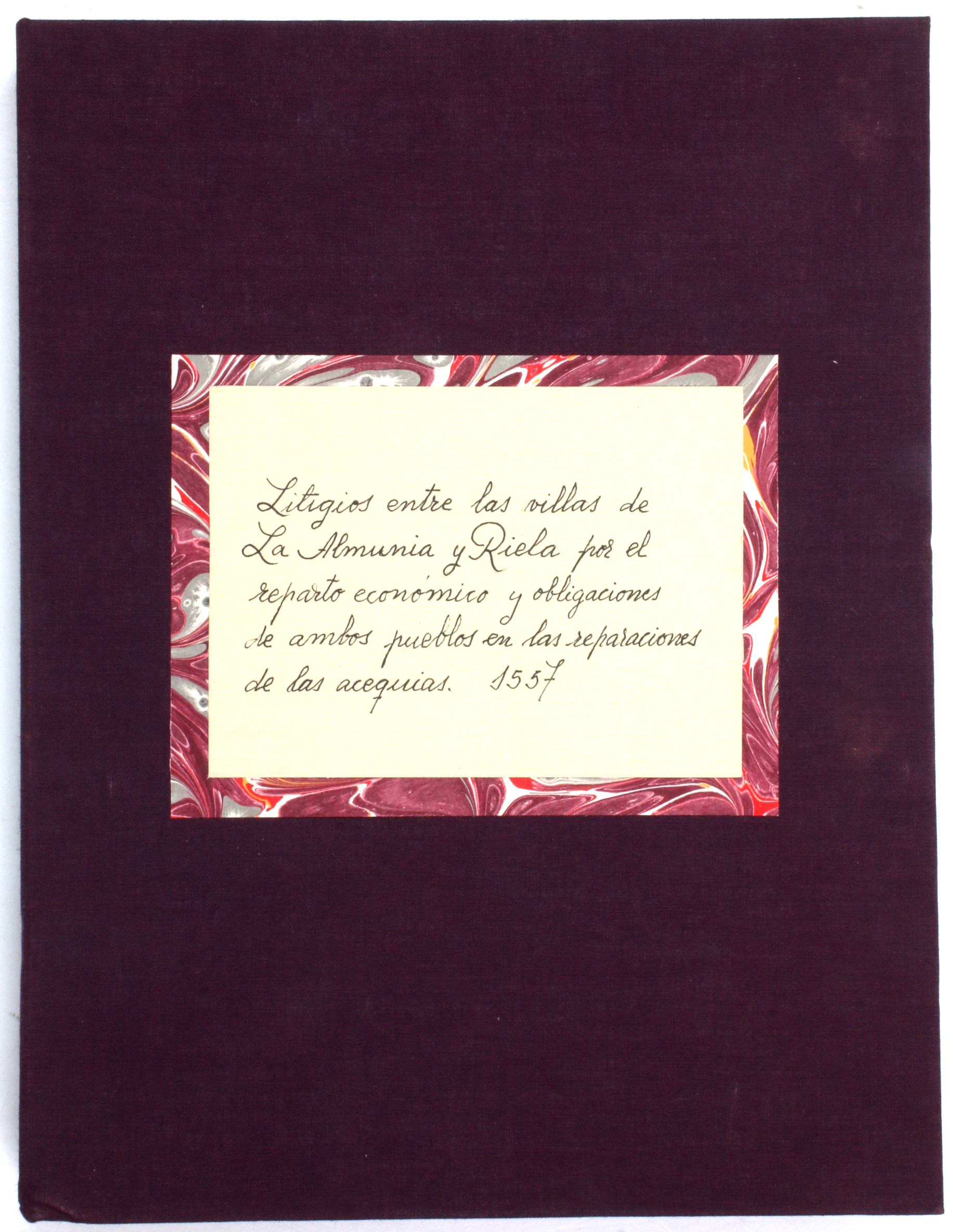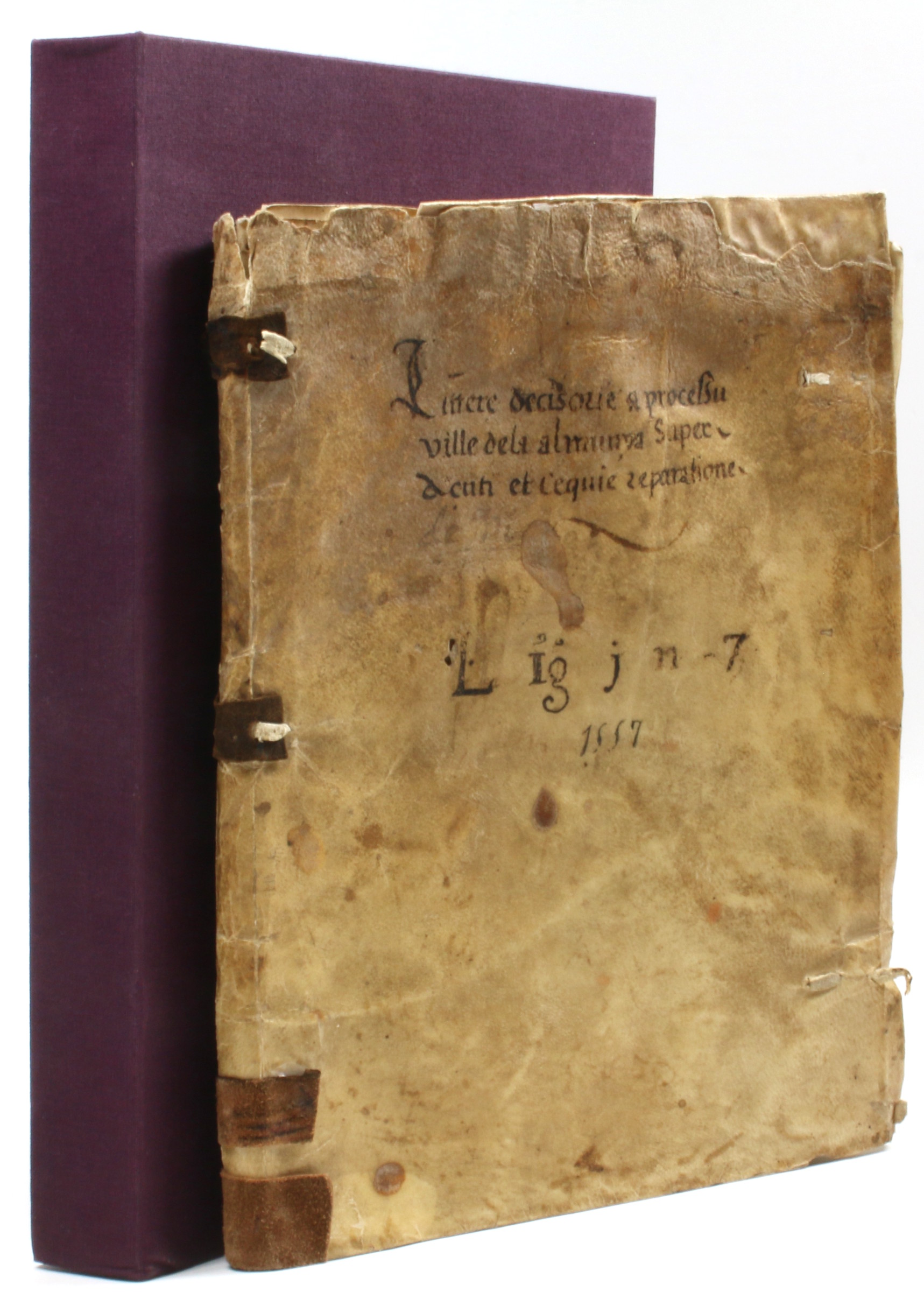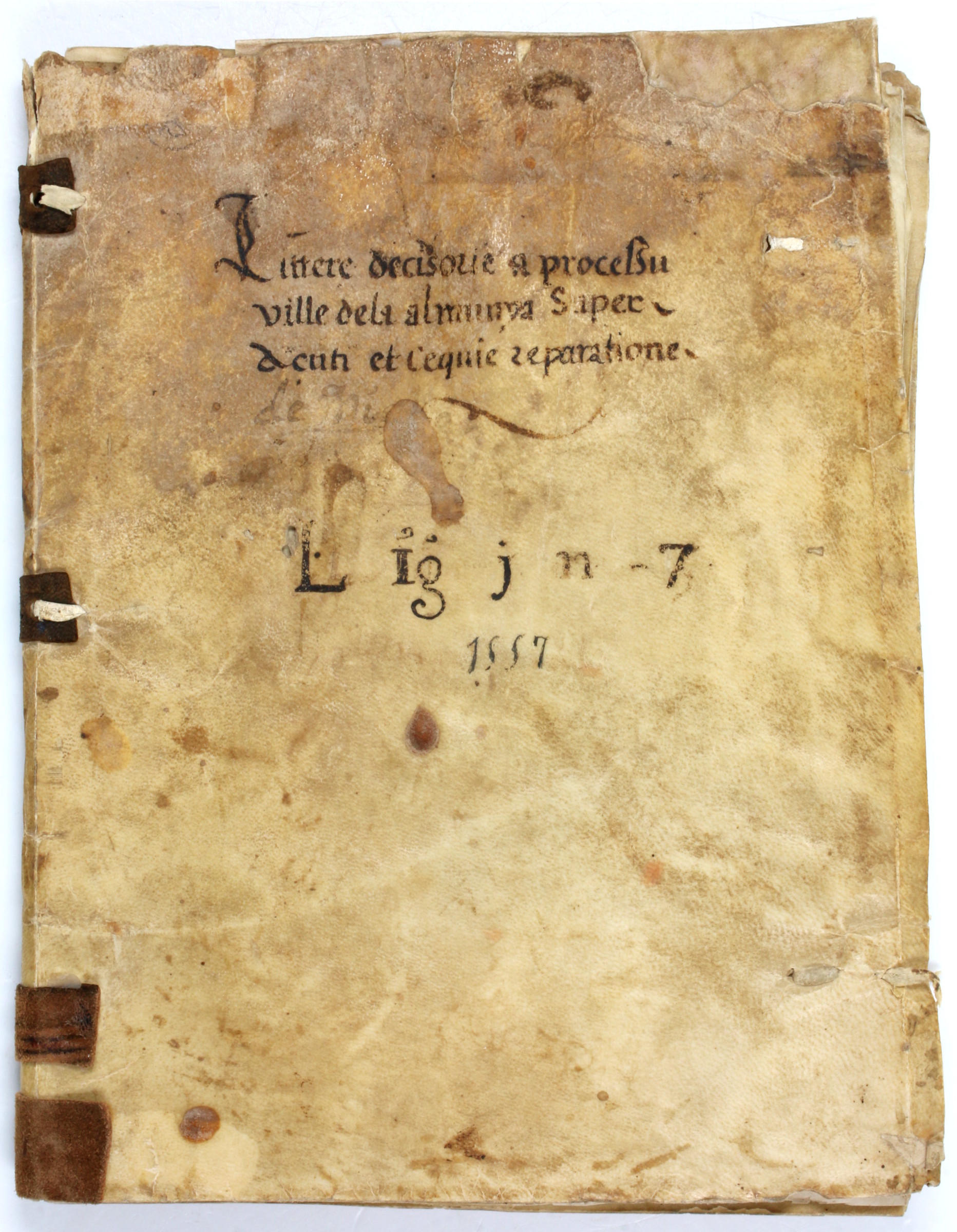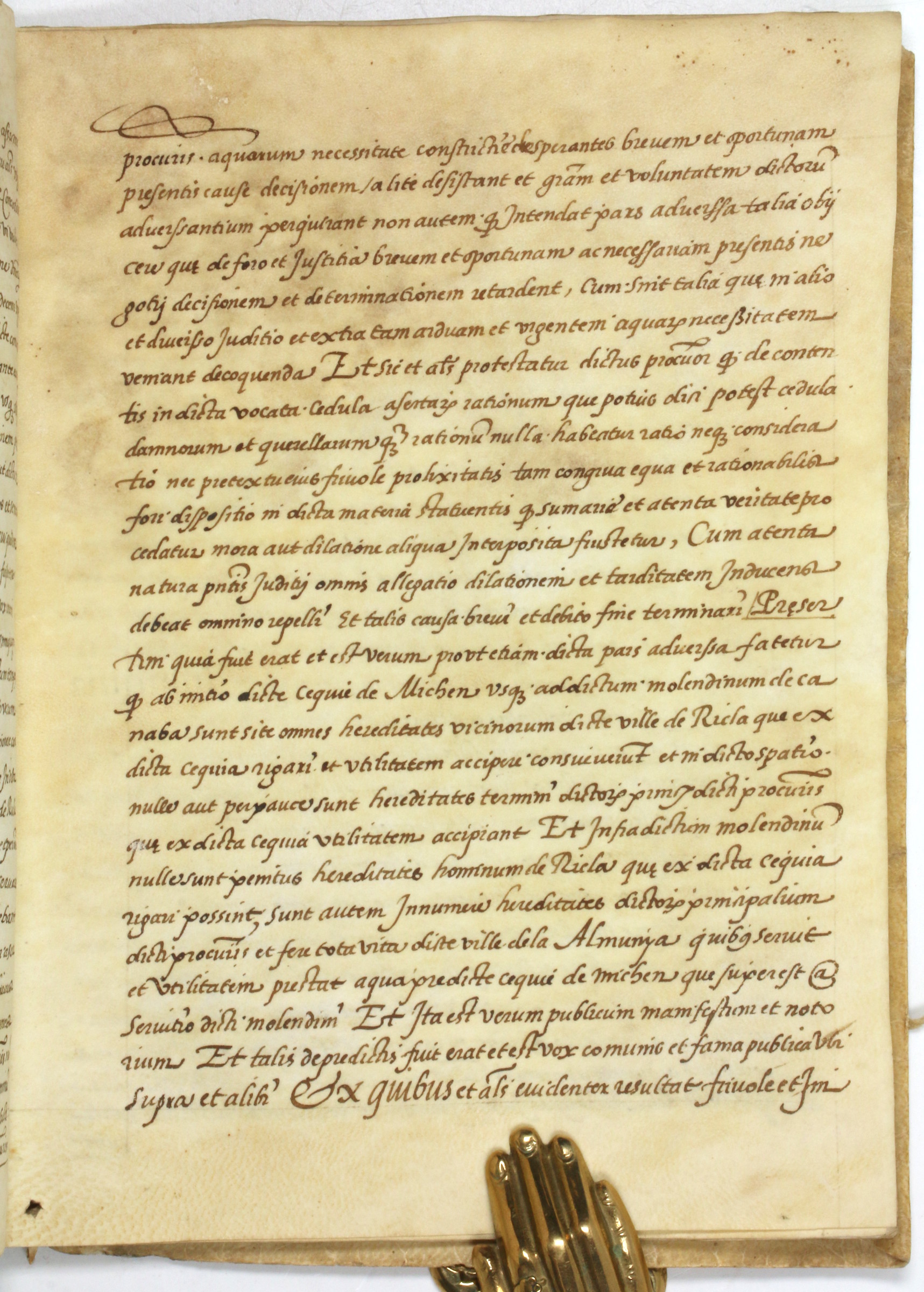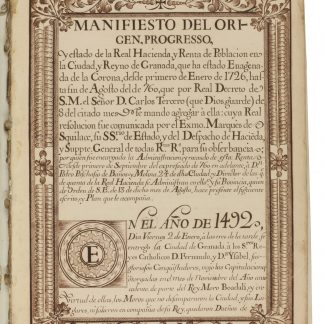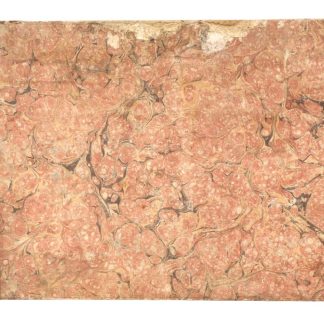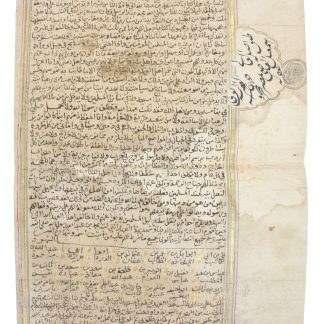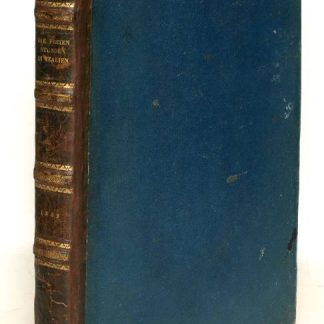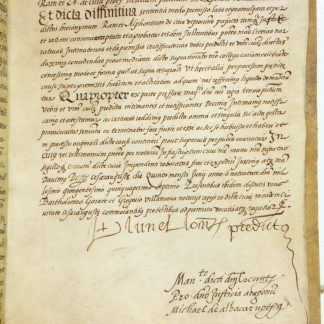Arabic and Aragonese: historical remnants in a 16th century lawsuit
Littere decisorie et processu ville de La Almunya super açuti et cequie reparatione.
4to (180 x 240 mm). 26 ff. (final 2 ff. blank). Latin manuscript on vellum. Bound in limp vellum, titled in contemporary ink on front cover. Housed in custom clamshell box.
€ 25,000.00
Unrecorded remnants of al-Andalus: a previously unknown 16th century lawsuit over medieval Muslim irrigation ditches. Penned in a tidy, humanistic Latin hand on vellum - with crucial legal points clarified in the local Castilian-Aragonese vernacular - the manuscript records a dispute rooted in the region's Muslim history; more specifically, in the remnants of its Muslim infrastructure. As early as the 8th century, Muslim Spain underwent extensive land reforms, including massive irrigation projects. These were so crucial to the landscape of the Iberian Peninsula that they were still in use long after the Reconquista, and were certainly still important to the landscape and livelihoods of the people of the town of La Almunia de Doña Godina in 1557, as this document makes readily apparent.
The declaration of a lawsuit was filed by a jurist from Zaragoza, micer Francisco Lunel (who appears again in legal records to disinherit his son in 1570), on behalf of the inhabitants of La Almunia de Doña Godina, who have undertaken various works to ensure the irrigation of the orchards - all-important in Aragon - in the neighbouring villages. These villages included Ricla, for which the people of La Almunia made major repairs to an irrigation ditch, and from which they demand financial compensation. The defendants are the heirs of the Lord of Ricla, namely his son-in-law, Diego de los Cobos y Mendoza, local landowner and newly awarded First Marquess of Camarasa (d. 1576). The defendants agree to financial compensation if the local populace will agree to repair a mill as well.
The legal proceedings provide a snapshot of the economic landscape of the Crown of Aragon and the depths of its Muslim roots. Many of the terms for irrigation used in the manuscript come from Arabic words: the officials appointed to oversee compliance with the agreements are canal overseers called "çabacequies", from the Arabic "sahib al-saqiya" (master of canals/waterwheels). Another section refers to an "açut" (a diversion dam) on the Jalón River, a direct adoption of the Arabic term "al-sudd". The use of Castilian-Aragonese is also notable, as it was used to repeat the most important legal points of the Latin.
Vellum covers gently soiled, with a few chips professionally repaired, remnants of ties; a few instances in which ink is very lightly rubbed. Very well preserved.
Not listed on Schoenberg, KVK, OPAC, or the In Principio Index.

